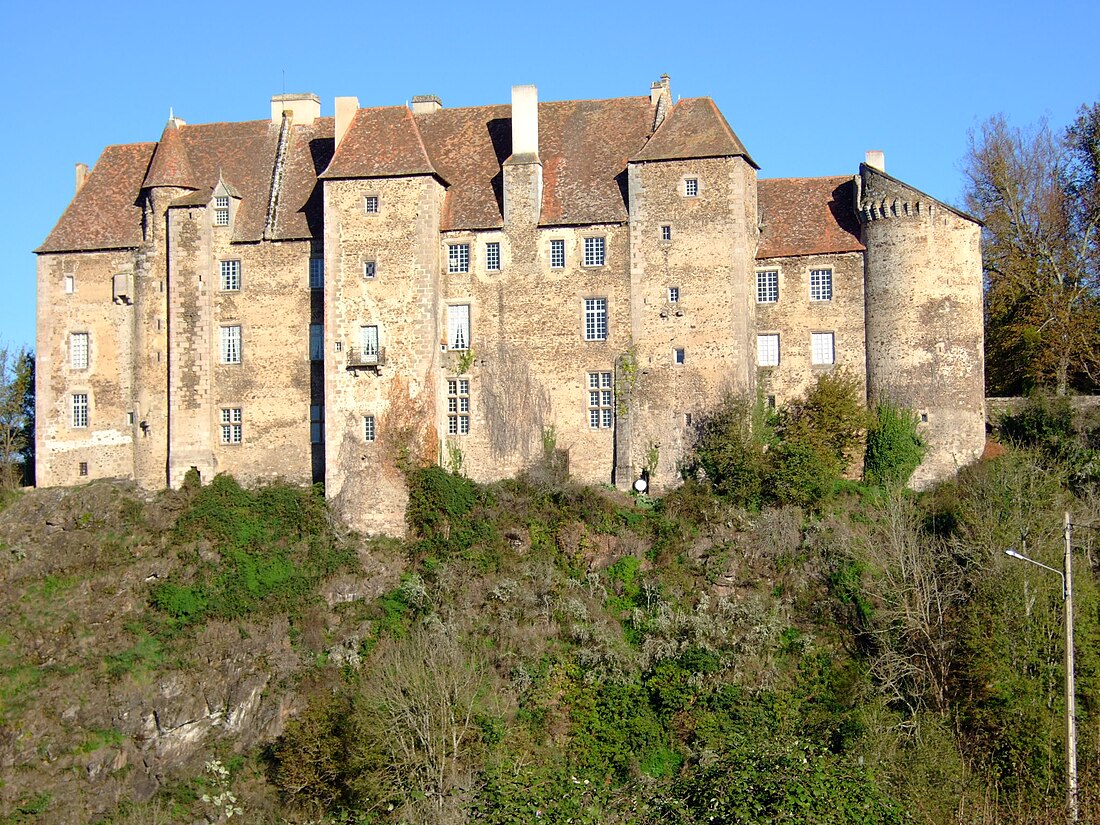Top Qs
Timeline
Chat
Perspective
Boussac, Creuse
Commune in Nouvelle-Aquitaine, France From Wikipedia, the free encyclopedia
Remove ads
Boussac (French pronunciation: [busak]; Occitan: Boçac) is a commune in the Creuse department in the Nouvelle-Aquitaine region in central France. The famous Lady and the Unicorn Tapestries (c. 1500) were discovered in 1841 in Boussac castle. In 1844 the novelist George Sand saw them and brought public attention to the tapestries in her works at the time (most notably in her novel Jeanne), in which she correctly dated them to the end of the fifteenth century, using the ladies' costumes for reference. In 1863 they were bought by the Musée de Cluny in Paris where they are still on display.
Remove ads
Geography
A small light industrial town situated by the banks of the Petite Creuse river, some 25 miles (40 km) northeast of Guéret, at the junction of the D11 and the D997 roads.
Population
Personalities
- Jean de Brosse, Marshal of France, lived and died here
- Pierre Leroux (1797–1871), philosopher, friend of George Sand was mayor here in 1848
- George Sand (1804–1878), set her romance Jeanne here in 1836
Sights
- The church of St. Anne, dating from the fifteenth century
- The twelfth-century castle
- The remains of the old town ramparts
- Several ancient houses and the river bridge, all from the fifteenth century

See also
References
External links
Wikiwand - on
Seamless Wikipedia browsing. On steroids.
Remove ads





